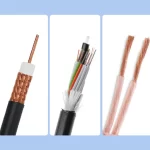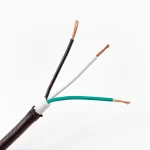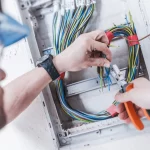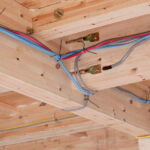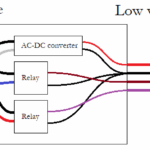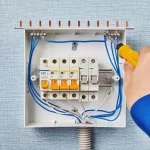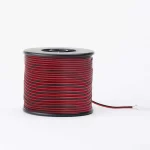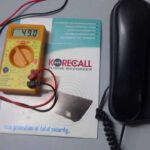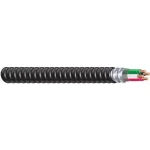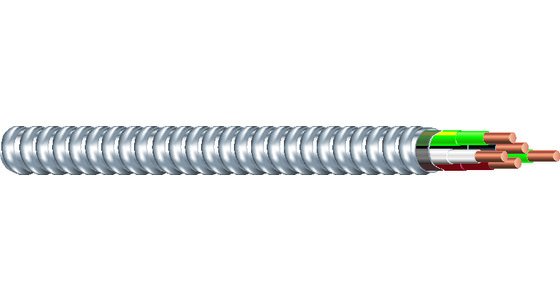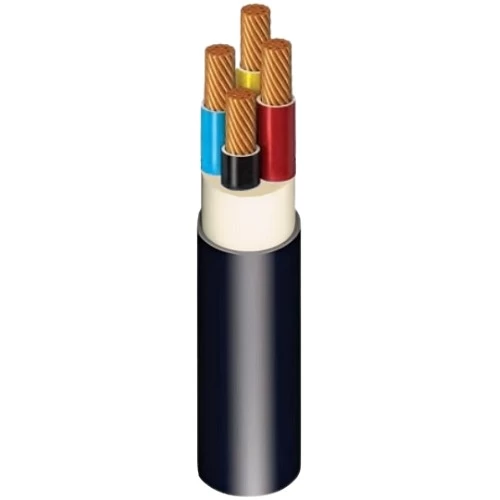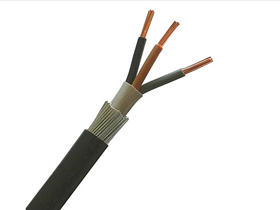
Wire for Low Voltage LED Lighting
For low voltage LED lighting systems (12V or 24V), use 12 AWG to 18 AWG stranded copper wire, depending on the total wattage and cable run length. Most residential LED installations work well with 14 AWG or 16 AWG wire, while longer runs or higher wattage systems may require 12 AWG to minimize voltage drop.
Quick Wire Size Reference
| Total LED Wattage | Run Length | Recommended Wire Size |
|---|---|---|
| Up to 60W | Under 50 feet | 18 AWG |
| 60-120W | Under 50 feet | 16 AWG |
| 120-200W | Under 50 feet | 14 AWG |
| Over 200W | Any distance | 12 AWG |
| Any wattage | Over 100 feet | 12 AWG |
Understanding Low Voltage LED Wire Requirements
Why Wire Size Matters for LEDs
LED lights are sensitive to voltage variations. Unlike traditional incandescent bulbs, LEDs can flicker, dim, or fail prematurely if they don't receive consistent voltage. Using undersized wire causes voltage drop, reducing LED performance and lifespan.
Common Low Voltage LED Systems
- 12V DC systems: Most common for residential landscape and accent lighting
- 24V DC systems: Better for longer runs and commercial applications
- Constant current systems: Specialized applications requiring specific driver compatibility
Wire Types for LED Lighting
Stranded vs Solid Wire
Stranded copper wire is preferred for LED installations because it:
- Handles vibration better than solid wire
- More flexible for routing through tight spaces
- Resists breakage from repeated movement
- Easier to work with in junction boxes
Insulation Types
THWN-2: Best for most LED installations
- Rated for wet and dry locations
- Temperature rated to 90°C
- Chemical resistant
- UL listed for most electrical applications
Direct Burial: For underground LED runs
- Moisture resistant outer jacket
- UV resistant for exposed portions
- No conduit required in most applications
Calculating Wire Size for Your LED Project
Step 1: Determine Total Wattage
Add up all LED fixtures in the circuit:
- Example: 10 LED spotlights × 6W each = 60W total
Step 2: Measure Cable Run Length
Measure from transformer to furthest LED fixture:
- Include any routing through walls or landscaping
- Add 10% extra for connections and flexibility
Step 3: Calculate Voltage Drop
Use this formula: Voltage Drop = (2 × Current × Distance × Wire Resistance) ÷ 1000
Acceptable voltage drop: Maximum 3% (0.36V for 12V systems, 0.72V for 24V systems)
Step 4: Select Wire Size
Choose wire size that keeps voltage drop under 3%:
12V System Wire Recommendations:
- 18 AWG: Up to 40W, 50 feet maximum
- 16 AWG: Up to 60W, 75 feet maximum
- 14 AWG: Up to 120W, 100 feet maximum
- 12 AWG: Up to 200W, 150 feet maximum
Installation Best Practices
Outdoor LED Lighting
Wire Protection Requirements:
- Use direct burial rated wire for underground runs
- Install at minimum 6 inches deep (12 inches under driveways)
- Mark cable locations for future reference
- Use waterproof wire nuts or sealed connectors
Junction Box Requirements:
- Use weatherproof boxes rated for wet locations
- Ensure proper drainage to prevent water accumulation
- Size boxes appropriately for number of connections
Indoor LED Lighting
Code Compliance:
- Follow NEC Article 411 for lighting track systems
- Use appropriate wire ratings for installation environment
- Maintain proper spacing from heat sources
- Secure wire runs according to local electrical codes
Connection Methods
Recommended Connectors:
- Wire nuts: Standard for most indoor applications
- Wago connectors: Reusable, reliable connections
- Waterproof connectors: Essential for outdoor installations
- Terminal blocks: Good for multiple wire connections
Common Mistakes to Avoid
Undersized Wire
Problem: Using wire that's too small causes voltage drop Result: Dim LEDs, flickering, premature failure Solution: Calculate total load and run length before selecting wire
Mixing Wire Types
Problem: Connecting different wire types or sizes Result: Inconsistent performance, code violations Solution: Use consistent wire type throughout the circuit
Poor Connections
Problem: Loose or unprotected wire connections Result: Heat buildup, fire hazard, system failure Solution: Use proper connectors and follow manufacturer instructions
Ignoring Voltage Drop
Problem: Not accounting for long cable runs Result: Poor LED performance at end of circuit Solution: Use voltage drop calculations or install multiple home runs
Transformer and Wire Compatibility
Matching System Components
12V Transformers:
- Most common for residential applications
- Available in 15W to 300W+ capacities
- Must match total LED load plus 20% safety margin
Wire Run Planning:
- Plan multiple shorter runs instead of one long run
- Consider installing sub-transformers for distant areas
- Use home run wiring from transformer to reduce voltage drop
Safety Considerations
- Always turn off power before making connections
- Use transformers with built-in short circuit protection
- Install GFCI protection for outdoor LED systems
- Follow local electrical codes for transformer installation
Cost vs Performance Considerations
Wire Cost Analysis
18 AWG: Least expensive but limited application 16 AWG: Good balance for most residential projects 14 AWG: Moderate cost increase, better performance 12 AWG: Higher cost but maximum flexibility and performance
Long-term Value
Investing in properly sized wire saves money by:
- Preventing premature LED failure
- Reducing energy waste from voltage drop
- Avoiding costly rewiring projects
- Ensuring reliable system performance
Professional vs DIY Installation
When to DIY
- Simple landscape lighting projects
- Short wire runs under 50 feet
- Total system under 100 watts
- Experience with basic electrical work
When to Hire a Professional
- Complex multi-zone systems
- Long wire runs requiring calculations
- Integration with home automation
- Uncertainty about electrical codes
Conclusion
Selecting the right wire for low voltage LED lighting ensures optimal performance, longevity, and safety. Start with your total wattage and maximum run length, then choose wire size accordingly. When in doubt, go one size larger - the small additional cost provides better performance and future flexibility. Remember that proper installation is just as important as proper wire selection for a successful LED lighting system.

